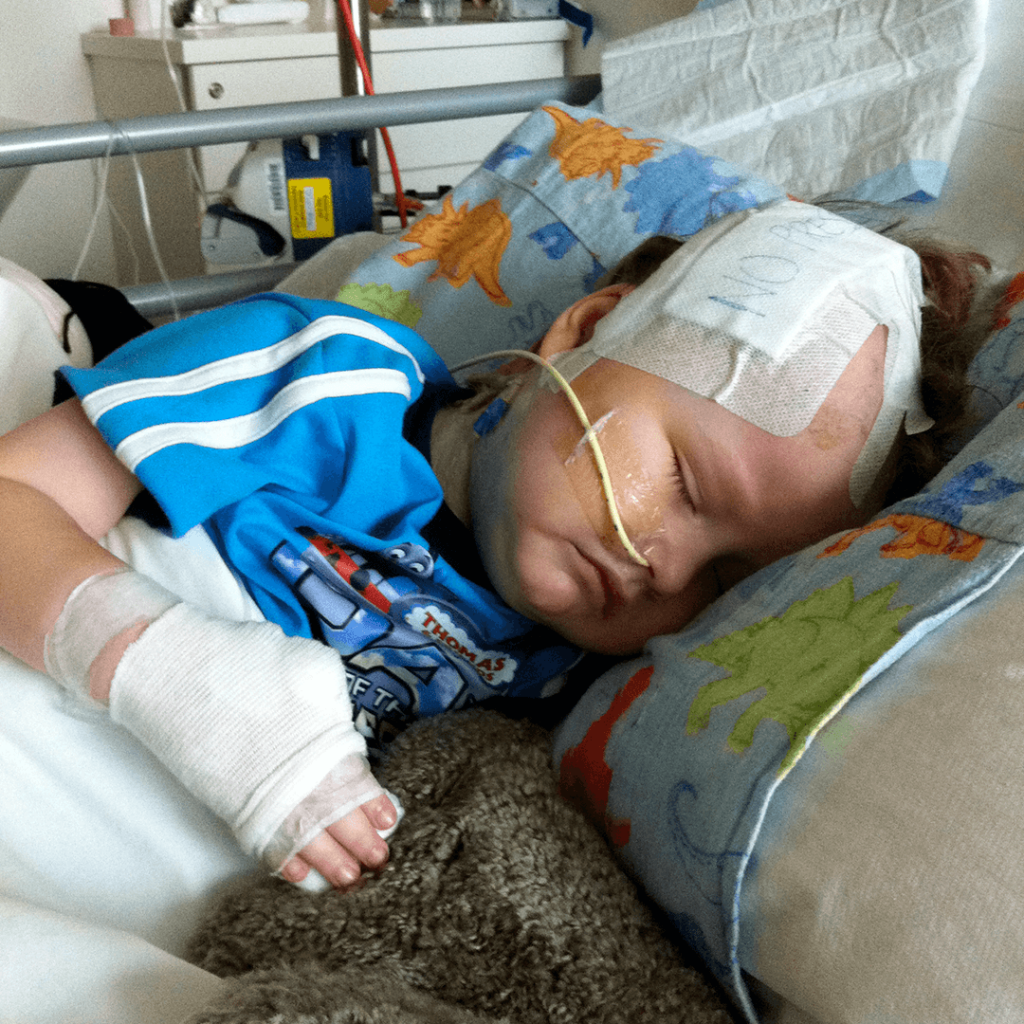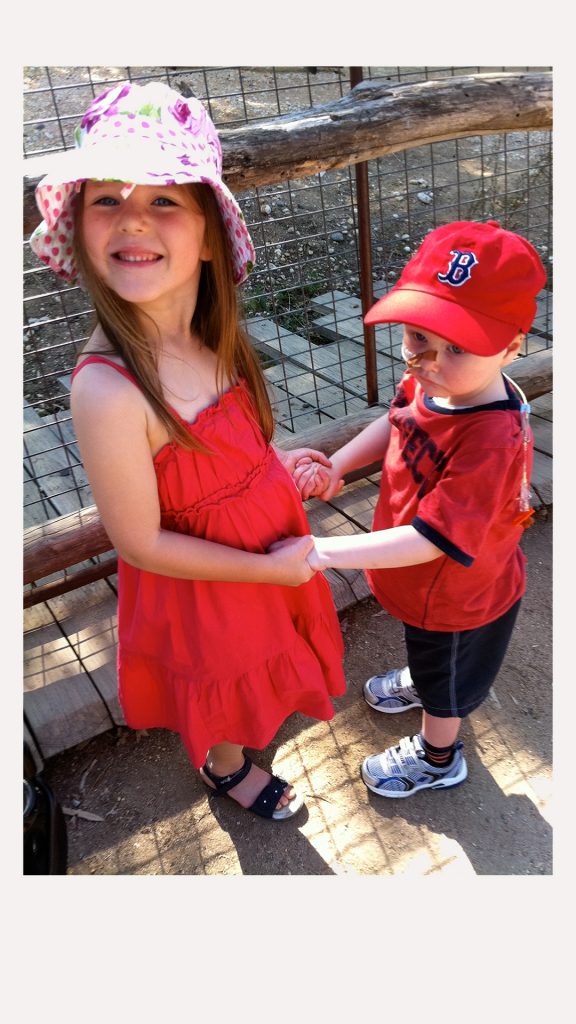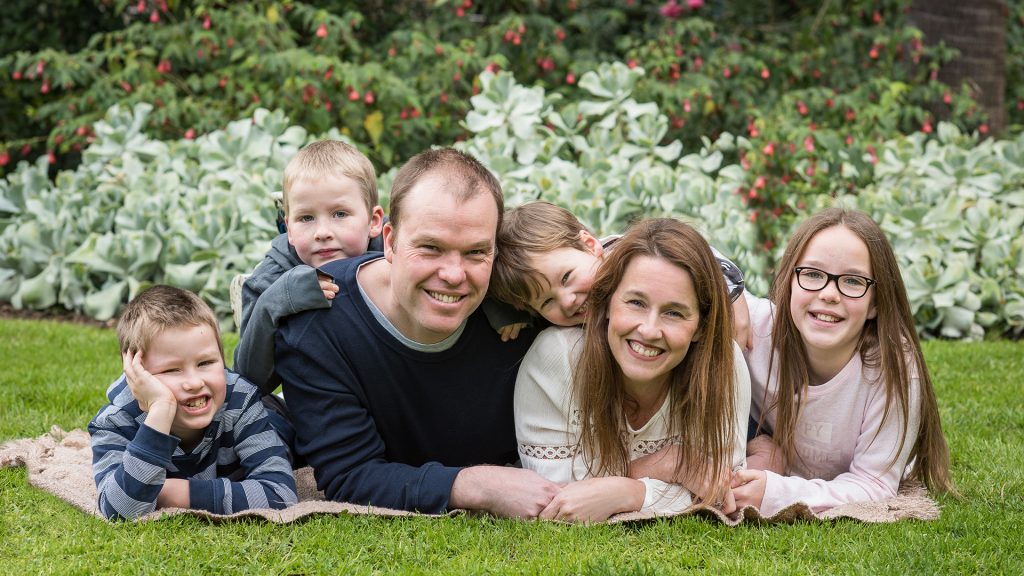Until our son David’s third birthday, he was a happy, healthy toddler. The only sign that something wasn’t right was that he wanted to be carried everywhere. We were told it was probably his shoes, maybe a virus. Our vigilant GP sent us to the Royal Children’s Hospital where, after a series of blood tests, we were told David had a 90:10 probability of cancer.
My husband Steve couldn’t believe that David could be at 10% risk of cancer. The haematologist gently corrected him that the chance wasn’t 10%, it was 90%. A bone marrow aspirate confirmed the diagnosis of acute lymphoblastic leukaemia (ALL).
Chemotherapy began immediately.
The hardest part of treatment was seeing David look at us with an expression that said, “I don’t know why you’re letting people do this to me, I can’t trust you anymore.” It was then, and I as remember it now, utterly heartbreaking.
The first treatment phase was brutal: a cocktail of toxic drugs, injections and procedures under general anaesthetic. After four weeks, David had a terrible night where he couldn’t stop crying, complaining that his arm wouldn’t work properly. Initial tests came back clear. As a final step, David had a CT scan. The diagnosis was unexpected and grim – David had a significant clot and a massive bleed in different parts of his brain, both of which were imminently life-threatening.
We were told that an operation might be necessary, but if this happened, there was a high chance David would die on the operating table as his blood was depleted of a clotting agent. Just as things stabilised and David’s blood chemistry was corrected, overnight his condition deteriorated. The next day, our little boy rushed into emergency neurosurgery. We were told to say goodbye.
During surgery, part of David’s skull was removed to ease the pressure in his brain. He was placed in an induced coma for several days while they monitored the bleed while also trying to reduce the size of the clot.
Each minute was critical and we had no idea whether he’d survive. There are literally no words to describe how terrifying this time was.

Miraculously David did survive, but even in his fragile state, chemotherapy had to continue. Our daily focus was making sure that he didn’t move around or touch his head where the portion of his skull was still missing, multiple injections of blood thinner, and injections into his stomach with chemotherapy that made him vomit for hours. It was horrific.

David suffered further complications. His vertebrae crushed due to steroid treatment for the stroke, he wore a full torso brace for 9 months, broke numerous bones as a result of reduced bone density and endured many life-threatening infections. However, he kept on fighting.
Seven months later, when we reached maintenance phase of treatment, it felt like we were coming out of a war.
The subsequent 2.5 years remained extremely challenging and included regular periods where David would have no immunity, was kept in isolation, suffered endless hospital visits along with daily chemotherapy which exhausted and nauseated him all at once. Once a month, after week of steroids, which we referred to as ‘crazy juice’, David become manic, irrational and was unable to sit still or sleep.
We were lucky to begin a Beaded Journey funded by the Children’s Cancer Foundation, which documented every procedure and milestone through treatment. Today, David’s Beaded Journey is over 20 metres long. It tells of 3.5 years of active treatment our little warrior undertook including 34 general anaesthetics, 19 hospital admissions, 2 neurosurgeries, 27 emergency admissions, 26 lumbar punctures, 117 finger pricks, 54 cannulas, 38 MRIs, CT scans, x-rays, his port accessed 58 times and he close to 1,000 doses of chemotherapy. All before he was 7 years old.
It is so important when going through a cancer diagnosis to know that your child is receiving world-class treatment. We know firsthand the importance of finding more targeted treatments with fewer side effects and how desperately underfunded this is. The Children’s Cancer Foundation funds an oncologist at RCH, Dr Khaw, to develop targeted treatments for children like David with high risk ALL. We hope for those that follow that his research team is successful.
David is now 10 and thankfully in remission. He carries the scars of a childhood that was interrupted. He is well behind at school having missed many of those critical years, requires regular ongoing speech therapy and physiotherapy and will never be able to play contact sports like other kids. But while this journey has been tough, they don’t come any tougher than our precious David who shows us each and every day the meaning of living life to its fullest.

Thank you Kate Johnson, mother of David, for sharing your story at The Million Dollar Lunch 2019.
Photo credits: Kate Johnson
Help children with cancer survive and thrive.
Donate today